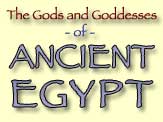
The name Sekhmet is derived from the Greek Sakhmis and meant the 'powerful' or the 'mightiest'. Sekhmet was the feared goddess of war and was represented in sacred art as a lioness or a woman with s a lioness's head. She was the daughter of Ra, and one of her commonest titles was Nesert, meaning 'flame', which emphasized this link. (Uatchet, the protectress of Ra and the kings, was also called the 'lady of the flame'.) Sekhmet was married to the god Ptah and as such was a member of the Memphis triad. Their son was Neferten, the lotus god, although some myths say that he was the child of Bast rather than Sekhmet. In later times Sekhmet and Bast were the watchers and guardians of the east and west, as Nekhebet and Wadjet were of the south and north, and so Sekhmet was also known as the lady of the mountains of the setting sun.
A second goddess with which Sekhmet was associated is Hathor, and in the story of Ra and his rebellious subjects the two are interchangeable - some versions say Hathor, others Sekhmet. There is a temple to Sekhmet-Hathor in the western Delta and in the temple of Abydos, Hathor is, given the title 'mistress of the mansion of Sekhmet'. Another of Sekhmet's many titles is the 'lady of the bright red linen', which may refer to the colour of the earth in her homeland - or perhaps more likely to the blood-splattered garments of her enemies.
When the king rode into battle at the head of his troops it was Sekhmet who stood in the chariot by his side, encouraging victory and protecting him from harm. She was deeply feared by her enemies and even the demons of Set and the serpent Apophis fell before her. The burning winds that blew from the desert was her breath and the Egyptians believed that a fiery aura surrounded her body. Plague and pestilence were also her doing and so appeals to her could bring about relief. This later developed into the belief that she was a healer, and she would be called upon by the doctors to assist them in their work. Her priests would accompany the physicians and while they worked would recite prayers to heal the sick. In later times they practiced medicine themselves.
When the royal quarters were moved to Thebes, the local goddess Maat, the consort of Thoth, became merged with Sekhmet. As Thoth was considered by some to be a particular aspect of Ptah, so Maat became a part of Sekhmet. In her temple Amenhotep III had almost 600 statues raised in her honour.
Sekhmet's head-dress, the solar disc surrounded by the uraeus, suggests the astrological symbol of Leo the lion and the sign's ruling planet is the sun.
www.greenmangatekeeper.com
|

